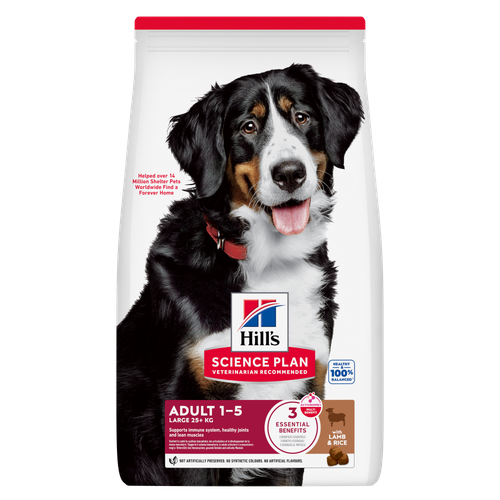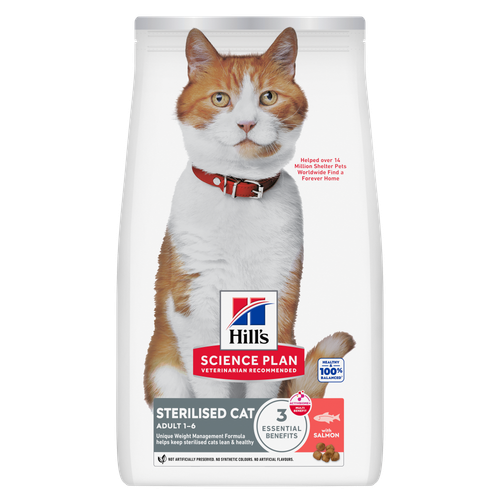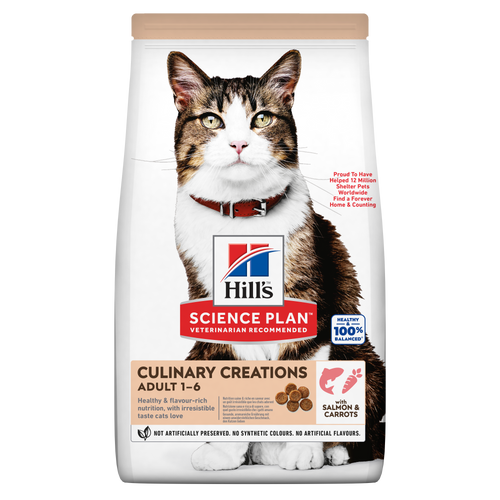
-
Find the right food for your petTake this quiz to see which food may be the best for your furry friend.Find the right food for your petTake this quiz to see which food may be the best for your furry friend.Featured products
 Adult Light Dog Food
Adult Light Dog FoodHill's Science Plan Light Adult Wet Dog Food is a complete premium pet food for adult dogs that tend to gain weight easily. This deliciously smooth loaf is formulated to deliver the appropriate amount of energy to support weight maintenance in adult dogs.
Shop Now Large Breed Adult Dog Food
Large Breed Adult Dog FoodHill's Science Plan Large Breed Adult Dog Food with Lamb & Rice is a complete pet food, specially formulated with ActivBiome+ Multi-Benefit Technology.
This food is specifically designed to fuel the energy needs of large breed dogs during the prime of their life.Shop Now Perfect Digestion Large Breed Puppy Food
Perfect Digestion Large Breed Puppy FoodPrecisely balanced nutrition with Hill's ActivBiome+ prebiotic blend actively contributes to supporting digestive health and overall wellbeing to help your pet feel their best
Shop NowFeatured products Sterilised Adult Cat Food
Sterilised Adult Cat FoodHill's Science Plan Adult Sterilised Cat Dry Food with Salmon is specially formulated with ActivBiome+ Multi-Benefit Technology. It is a precisely balanced nutrition, tailored to meet the needs of sterilised cats, to help keep sthem lean & healthy.
Shop Now CULINARY CREATIONS ADULT CAT FOOD
CULINARY CREATIONS ADULT CAT FOODHill's Science Plan CULINARY CREATIONS Adult cat food with Salmon & Carrots was formulated to provide a great-tasting experience to cats. Its delicious flavour and texture are combine with essential nutrients to support cats' optimal health during the prime time of their life. Specially formulated with high-quality salmon protein, essential taurine for heart health & balanced minerals to support kidneys & bladder.
Shop Now Adult Cat Food
Adult Cat FoodHill's Science Plan Adult Cat Food with Chicken is a complete pet food, specially formulated with ActivBiome+ Multi-Benefit Technology.
This food is specially formulated to fuel the energy needs of cats during the prime of their life.Shop Now -
Dog
- Dog Tips & Articles
-
Health Category
- Weight
- Food & Environmental Sensitivities
- Urinary
- Digestive
- Joint
- Kidney
-
Life Stage
- Puppy Nutrition
- Adult Nutrition
- Senior Nutrition
Cat- Cat Tips & Articles
-
Health Category
- Weight
- Skin & Food Sensitivities
- Urinary
- Digestive
- Kidney
-
Life Stage
- Kitten Nutrition
- Adult Nutrition
Featured articles Pet Nutrition: What Makes "Healthy" Pet Food Healthy? | Hill's Pet
Pet Nutrition: What Makes "Healthy" Pet Food Healthy? | Hill's PetIn people, the right diet is very important. If you are eating the wrong way for your metabolism, activity level, age and lifestyle you could end up with health issues.
Read More The Incredible Science Behind Your Pet's Microbiome
The Incredible Science Behind Your Pet's MicrobiomeLearn what your pet's microbiome is, how it contributes to your pet's gut and overall health, and why nutrition is important in maintaining healthy microbiomes.
Read More Microchipping: The Facts | Hill's Pet
Microchipping: The Facts | Hill's PetThe government has announced that as of April 2016, all dogs in the UK must be microchipped by law.
Read More -


As a conscious, responsible cat owner, you want to make sure your cat is eating the healthiest food she can. If you’re interested in making cat food at home, be aware that your cat has very different nutritional needs than you do. A study showed that more than 90% of homemade pet foods were found to be nutritionally unbalanced and incomplete for pets.* Without the proper quantity and balance of nutrients, your cat could end up with a variety of health problems. For example, cats need a careful balance of calcium and phosphorus to ensure a healthy metabolism.** 
Cats are strict carnivores, so they must have meat for protein and a fat source; they also cannot derive the same nutritional sources we do from plant-based sources. To maintain a balanced diet, your cat also needs amino acids such as arginine and taurine (taurine is essential for your cat’s heart and vision), fatty acids, vitamins, minerals, and water. A modest amount of carbohydrates will provide your cat with useful energy, but too many carbs can result in obesity.
Most concerns associated with homemade cat food are with raw or undercooked meats, which can cause foodborne illnesses in you and your cat. Raw meats often contain bacteria like salmonella, listeria, and even E. coli. These serious pathogens can be passed from your cat to anyone she comes in contact with; small children, the elderly, and people with compromised immune systems are at highest risk. Raw bones can also tear or obstruct your cat’s gastrointestinal tract and damage her teeth. The American Veterinary Medical Association recommends these actions to eliminate these possible health risks:


Tasty Tips
- Do not give raw or undercooked foods to your cat
- Provide fresh, clean, nutritionally balanced and complete food
- Throw away uneaten food at least daily
- Thoroughly wash your hands before and after feeding meals or treats, cleaning food dishes, and disposing of uneaten food
Food safety is also an important factor in DIY cat food. Leaving food out for too long can result in bacteria and foodborne illness. Be sure to throw away any uneaten food in your cat’s bowl, and store the rest in the freezer to preserve its nutrients.
Substituting one ingredient for another can also deprive your cat of her essential nutrients. Nutritional requirements differ among cats of different ages, breeds, and sizes, so the right portion size for your cat may be wrong for another cat. Because needs vary widely, we recommend Hill’s Ideal Balance cat food. With natural ingredients to accommodate any life stage, Ideal Balance™ contains more than 50 nutrients.
However, if you are looking for a healthy homemade option to treat your cat every now and again, check out how to make your own homemade cat treats.
*Small Animal Clinical Nutrition IV Edition, page 169.
**Small Animal Clinical Nutrition IV Edition, page 310.


One of our staff authors prepared this article for you
Related products

Hill's Science Plan Mature Adult Cat Food with Chicken is a complete pet food, specially formulated with ActivBiome+ Multi-Benefit Technology.
This food supports graceful aging in cats, providing a synergistic ingredient blend to help support energy & activity levels.

Hill's Science Plan Adult Cat Food with Chicken is a complete pet food, specially formulated with ActivBiome+ Multi-Benefit Technology.
This food is specially formulated to fuel the energy needs of cats during the prime of their life.

Hill's Science Plan Adult Sterilised Cat Dry Food with Salmon is specially formulated with ActivBiome+ Multi-Benefit Technology. It is a precisely balanced nutrition, tailored to meet the needs of sterilised cats, to help keep sthem lean & healthy.

Hill's Science Plan CULINARY CREATIONS Adult cat food with Salmon & Carrots was formulated to provide a great-tasting experience to cats. Its delicious flavour and texture are combine with essential nutrients to support cats' optimal health during the prime time of their life. Specially formulated with high-quality salmon protein, essential taurine for heart health & balanced minerals to support kidneys & bladder.
Related articles

Learn about the causes of cat dermatitis, how to spot the symptoms and the best treatment options. Visit Hill's Pet for detailed guidance and tips.

Understand common skin issues in cats and how to manage them effectively. Learn signs and prevention, and get care tips. Find out more at Hill's Pet.

Cats with sensitive skin have special needs and even healthy cats can sometimes develop poor skin health. Learn more about sensitive skin symptoms in your cat, what you can do to help your pet feel more comfortable and get recommendations on sensitive skin cat food.

Learn how your cat's poo can be a good indicator of her overall health, including how to spot unhealthy or abnormal cat poop and what it might mean.

Put your cat on a diet without them knowing
Our low calorie formula helps you control your cat's weight. It's packed with high-quality protein for building lean muscles, and made with purposeful ingredients for a flavourful, nutritious meal. Clinically proven antioxidants, Vitamin C+E, help promote a healthy immune system.
Put your cat on a diet without them knowing
Our low calorie formula helps you control your cat's weight. It's packed with high-quality protein for building lean muscles, and made with purposeful ingredients for a flavourful, nutritious meal. Clinically proven antioxidants, Vitamin C+E, help promote a healthy immune system.

